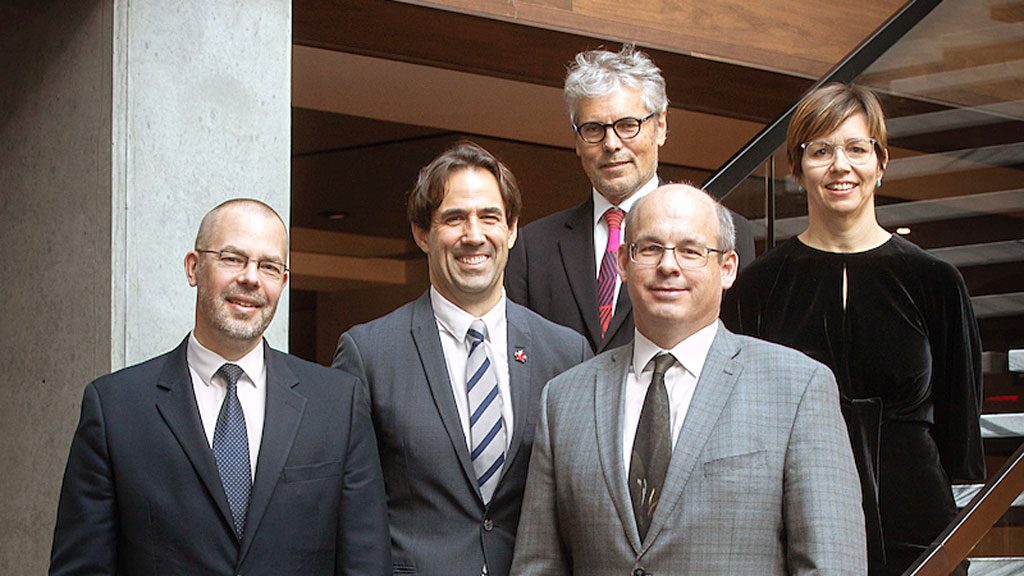A new agreement between bodies of Canadian and European architects to offer reciprocal recognition of credentials will have significant benefits for practitioners and the profession in Canada, will enrich Canada’s urban environment and could lead to a higher level of architectural literacy among all Canadians, says an Edmonton-based designer who was involved in drafting the new accord.
As it is now, Canadian architects hoping to find work in Europe must find local design professionals to collaborate with and final control rests with the European architects; it’s the same for Europeans looking for work here.
But once a new Mutual Recognition Agreement signed in October is ratified by European governments, expected in 2019, architects from Canada and 27 European nations who meet a newly established set of professional standards will be able to take on work in other jurisdictions without restriction.
A key negotiator with the Architects’ Council of Europe, on behalf of Canadian Architectural Licensing Authorities (CALA), was architect Peter Streith, chair of the International Relations Committee of CALA.
“Architecture is one of the global professions. Looking at different cultures and how you can construct differently to improve the urban context, it is key to anyone’s quality of life, so expanding those opportunities for dialogue, research and knowledge is key to advancing our profession,” said Streith.
“That’s why we are moving forward on this agreement.”
The agreement, some 10 years in the making, lays out requirements that architects must satisfy when pursuing mutual recognition. The basic eligibility requirements include:
- A qualified architect from the EU and Canada shall be licensed or otherwise recognized and be a member in good standing in their home jurisdiction and have completed a minimum of 12 years of education, training and practice in the field of architecture, in at least one of the territories of their home jurisdiction, of which a minimum of four years shall be post-registration/licensure experience;
- proof of “Good Standing” in the home jurisdiction, as verified by the local regulatory authority;
- knowledge of the codes, laws and other matters applicable to the practice of architecture in the host country;
- mobility across borders in the European Union and across provinces and territories in Canada; and
- for Europeans, completion of a 10-hour online course on Canadian domain-specific requirements in architecture.
Besides offering architects who meet the standards in the other jurisdiction more control of a design, they also gain ownership rights to the design, Streith said. Currently, a local architect is the architect of record, he explained.
Canada has had a similar agreement with the United States for years and there is also one with Australia and New Zealand.
“With our agreement with the States, it is almost equal going back and forth, and it has helped amalgamate some of the bigger firms,” said Streith, discussing how Canadians will deal with increased competition.
“At the beginning there is always hesitation that there is going to be an influx of European architects. There are still going to be the ‘starchitects’ as people call them, who will look at competitions and bigger projects. They have always been there, we have been collaborating with them.”
Even now, international design stars like Norman Foster, designer of The Bow, Calgary’s tallest office tower when completed in 2012, contribute to enhance Canada’s urban culture, Streith pointed out, and when the new deal takes effect it will push the design boundaries even more, he argued, with Canadian communities reaping the benefits.
“Europeans are further advanced from a sustainability perspective,” Streith said. “We can learn from that. When someone comes over here and develops something that pushes architecture to the next level, it helps everyone.”
Meanwhile, Canadians have developed their own specialties that should earn them new niches in Europe, he said.
“When you look at Passive Houses, they are catching up to Europeans on that. We have done some things up in the Arctic, now we can bring that over there and push further,” he said.
Streith anticipates more Canadian interns going over to Europe to learn European practices and returning to enrich the profession here. And Europeans tend to have more design competitions, a practice which if imported here will work to educate the average Canadian on the value of good architecture and will stretch our design sensibilities.
“What it does over there, the local community, their understanding of architecture is far greater than the Canadians’ because they get engaged in these competitions and understand why the jury picked one over the other and they expect better designs,” he said.
“But if the community doesn’t like the design they will tell you.”











Recent Comments
comments for this post are closed